The Beatles in 3D: Giles Martin on remixing the Fab Four
- Published
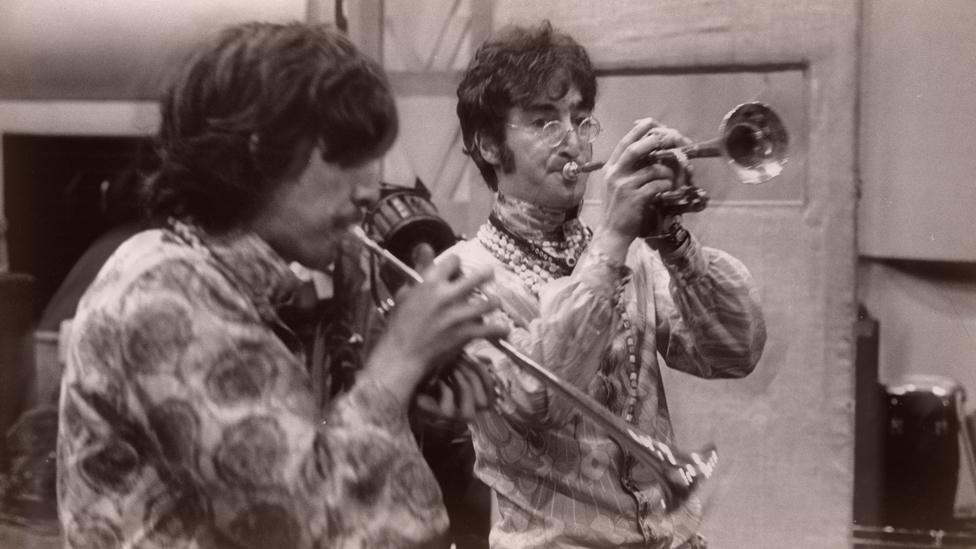
Giles Martin: "You're trying to make the music sound how you remember it sounding in your mind"
Giles Martin reveals how he took The Beatles master tapes and remixed them in surround sound for the Fab Four's new video collection.
Abbey Road is full of gremlins.
Giles Martin - son of record producer George Martin - can't play any music through his mixing desk at the iconic North London studios.
He re-boots his computer while two engineers crawl on the floor, plugging in cables and fiddling with various switches. At one point, someone unplugs a hard drive.
"Oh God, you've just deleted the Beatles," Martin deadpans.
Eventually, the equipment springs to life. The producer dismisses a workman, who has appeared to drill locks into the door, and apologises for the delay.
"I just moved into this studio yesterday," he explains.
With that, Martin loads up a file that contains dozens of versions of the Beatles' back catalogue. There are the original recordings, mono mixes, stereo remasters and various other snippets - all of which Martin can flick between at will.
He used these tracks as a reference while producing a new DVD compilation, Beatles 1+, which sees the Fab Four's biggest hits re-imagined in stereo and 5.1 surround sound, accompanied by restored promotional videos and films.
"The goal is to bring the band closer to you," says Martin. "To have that same feeling at home that I get when I put on the tapes in the studio."
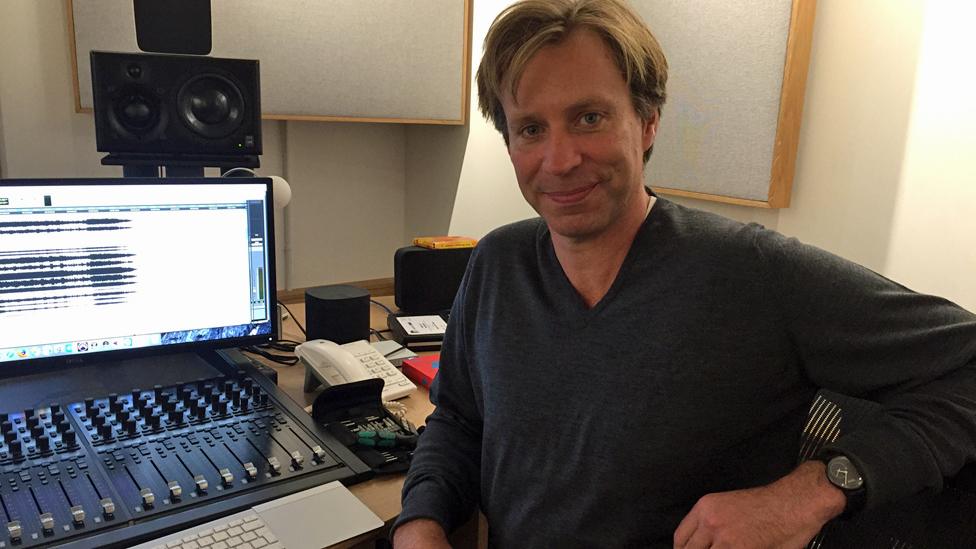
Giles Martin spent months referring back to the original recordings to build up a picture of the Beatles' thought processes
Rather than viewing the originals as sacred, the band appreciate their music being tweaked this way, he says.
"My dad went to see John Lennon in 1980 before he died, and John said to him: 'Do you know what I'd really like to do? I'd love to record everything again.'
"Dad said, 'Really? How about Strawberry Fields?'
"And John said: 'Especially Strawberry Fields.'"
Counter-intuitively, Martin's new mixes are often simpler than the existing stereo versions - but he has a solid explanation.
Up to Yellow Submarine, the Beatles treated the mono mixes of their albums as the definitive documents. The stereo versions were created as an afterthought, often without the band's involvement.
"My dad was never happy with the extreme panning that went on," explains the producer. "You'd have the band on one side and all the vocals on the other.
"And you have what I call the socks and sandals brigade saying: 'The only way to listen to Sgt Pepper's is in mono.' To be honest, they're probably right, but no-one does that any more."
So he set about recapturing the power of those mono recordings. "In Beatles world, if you can make something more aggressive, they want it more aggressive," Martin says, cueing up Paperback Writer to prove his point.
"If you listen, this mono mix is very crunchy, very in your face," he says, as the textured harmonies give way to Paul McCartney's guitar riff.
"The stereo sounds wider," Martin continues, switching seamlessly to that version, "but the problem is that all the action - the guitar and drums - are on the left speaker."
"The guitar riff is what you remember about that song," he says, but it loses its oomph by being shifted to one side. Accordingly, the new mix puts the instruments into a focussed central point, while spreading the vocals across the front speakers.
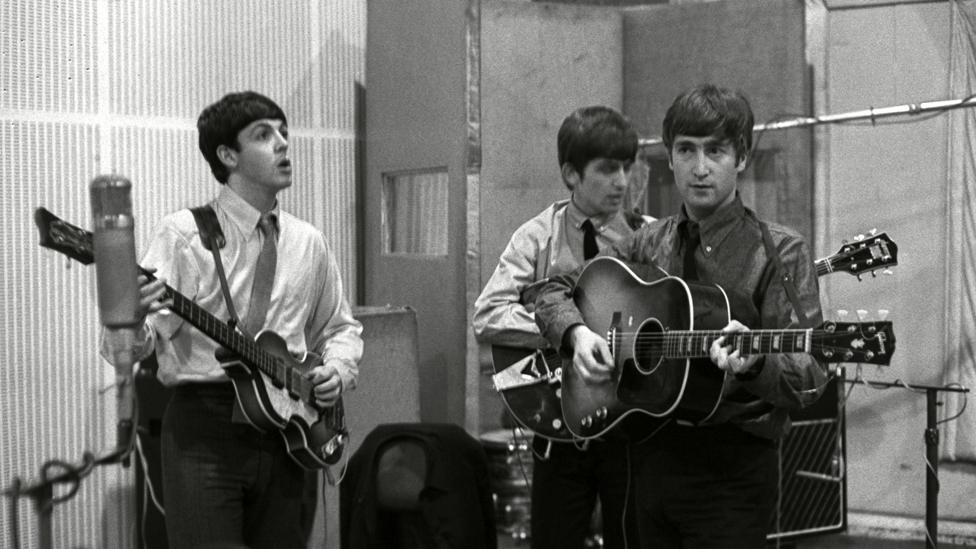
The Beatles paid more attention to the mono mixes of their records - with stereo versions often mixed by Abbey Road engineers in their absence
The rear speakers present a separate challenge. Rather than placing Ringo's drums behind the listener, or making vocals circle the room, Martin opts for restraint.
"Dolby came to see me with 5.1 when it was new," he explains, "and they'd mixed What's Going On by Marvin Gaye in surround sound, with the guitar coming out of the right rear speaker.
"But if you went to see Marvin Gaye performing and his guitar player decided to stand at the back of the audience with his amp, you'd go: 'Could you put him on the stage, please?'"
Over-using those rear channels is "really distracting," Martin argues, so he came up with an ingenious solution. He went into Abbey Road's Studio 2, external, wired up a "really big" loudspeaker and played the original Beatles recordings at full volume.
"We acted like the band were playing in there again, and recorded the walls using the original Beatles microphones," he says. Those reverberations and echoes were then placed into the rear speakers to give "the illusion of being in the room with the band".
"And they are really good as a band," Martin says. "That sounds stupid, but they do actually make a good sound. You want to get the least stuff between that and what's at home."
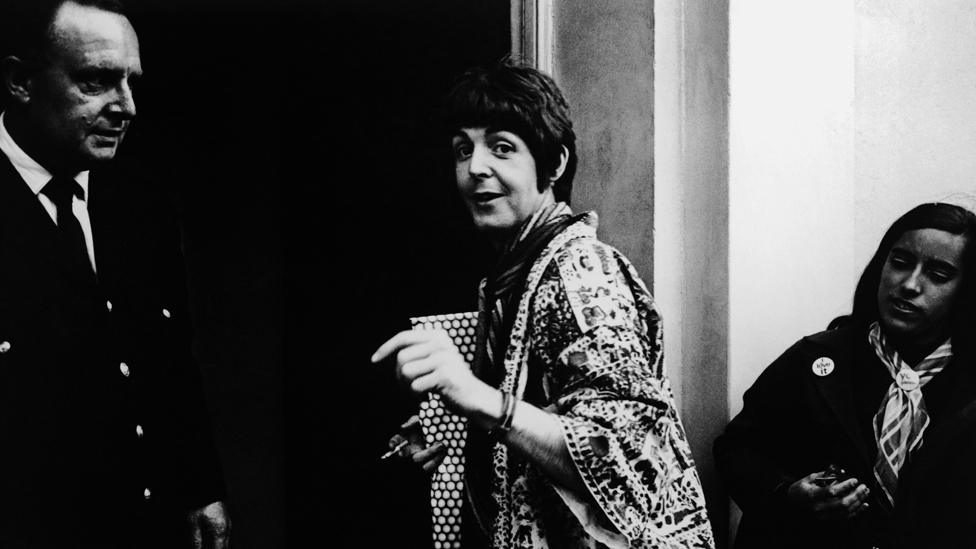
Almost everything The Beatles recorded was laid down in Abbey Road - known as EMI Studios at the time - making bold innovations in sound recording
With the later Beatles recordings, however, he had more opportunity to be playful.
"Strawberry Fields is more of a sound picture than a song," Martin says, scrolling over to John Lennon's masterpiece, and locating the descending svarmandal figure (the one that sounds like a sitar) between the first chorus and second verse.
"On the stereo remaster, the svarmandal does something cool - it pans. So in our new version, we can steal that and make it even better. Now it goes around all five speakers like a horseshoe."
But Martin also made a more elemental tweak.
"The mono Strawberry Fields - the one the Beatles mixed - is slightly more intense and more condensed. There's a mellotron pulse under John's voice which forms a sort of harmonic for his vocal. In the stereo it's off to one side and, as a result, John's voice sounds thinner.
"I said: 'OK, if we're doing a new mix of this, we should do one that sounds like the mono. So we came up with this," he says, pressing play on the updated version which, it has to be said, sounds much more fulsome.
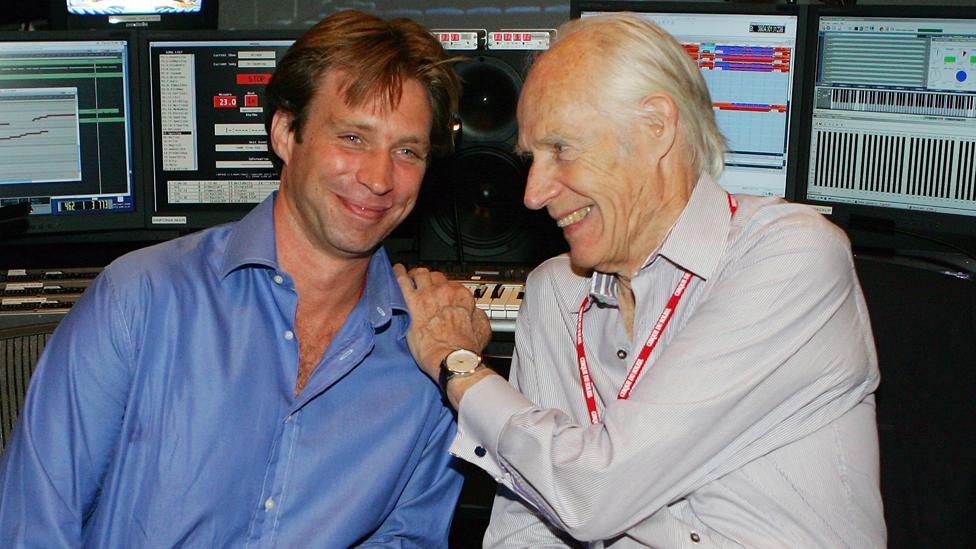
Giles says he didn't ask his father or the surviving Beatles about their intentions in the studio - "because everyone remembers it differently"
In making such decisions, Martin tried to put himself into the mindset of John, Paul, Ringo and the two Georges as they worked - just metres away from where he's sitting - in the 1960s.
"All of the songs should sound like you remember them," he says. "It's not meant to be the 'Giles Martin version'. I work for the Beatles."
Martin confesses to one glaring mistake: The stereo mix of Lennon and McCartney's kitchen sink symphony A Day In The Life is missing a piano, because he opted to use the version created for the Cirque Du Soleil show, Love.
"All of these fans will be going: 'Why did you take this piano off?' And the answer is I didn't - I just used the Love version," he cringes.
Martin is modest about his achievements, saying more than once that "there's no talent in what I do". And he admits his every decision will be pored over by Beatles obsessives.
"There are people who know this material better than I do," he says. "But generally I get a pretty good ride. They know I do it because I care, rather than showboating and going: 'This is how I think they should sound.'"
Ultimately, he would have liked to be more inventive with the surround mixes but had to "rein myself in, because these are the Beatles number one hits".
"If I was doing a 5.1 of the White Album, though? Let me at it!"
The Beatles 1+ is out now.

- Published8 November 2015

- Published24 November 2012
